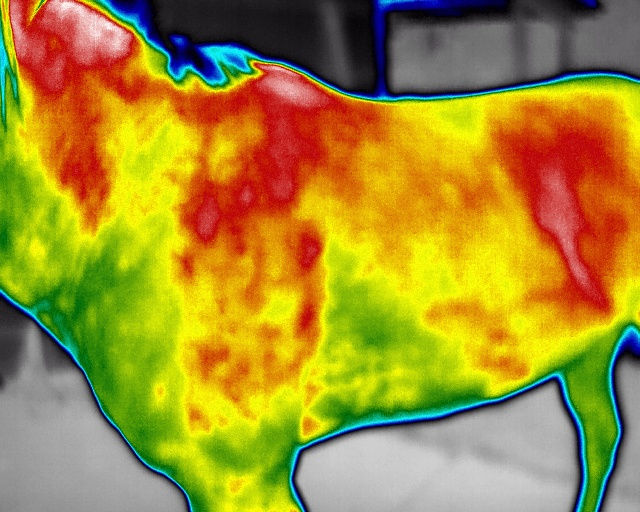Supporting Horses with Shivers Syndrome: Holistic Care Tips for Comfort & Mobility
- Dr. Angelique Barbara

- Jul 22
- 2 min read
Updated: Aug 8
Shivers Syndrome (or “Shivering”) is a challenging and often frustrating condition for horse owners. It’s a neuromuscular disorder that affects the hind limbs, making tasks like backing up or lifting the hind legs difficult. While there is currently no known cure, the right supportive care can significantly improve a horse’s comfort and quality of life.
In this article, we’ll cover what shivers is, why it happens, and practical techniques you can use to help your horse feel better.

✅ What is Shivers?
Shivers is characterized by involuntary muscle tremors and difficulty with hind-limb coordination. Horses may exhibit signs such as:
Trembling or jerking of a hind leg when asked to lift it
Difficulty backing up or holding a leg in a flexed position
Progression over time, though symptoms can vary in severity
Researchers believe this condition involves nerve and muscle dysfunction, possibly linked to the cerebellum, though the exact cause remains unclear.
✅ Goals of Supportive Care
Because there is no cure, the focus is on management and comfort:✔ Improve muscle flexibility✔ Reduce tension in the hindquarters✔ Support neurological function✔ Maintain mobility without over-stressing the horse
✅ Massage & Bodywork Techniques
Gentle massage can relieve muscle tension, improve circulation, and promote relaxation:
Use effleurage (long, gliding strokes) over the hindquarters and lumbar region to warm up the muscles.
Incorporate petrissage (gentle kneading) on the gluteals and hamstrings to reduce stiffness.
Add light range-of-motion exercises, but never force a stretch—work within the horse’s comfort level to avoid triggering symptoms.

✅ Kinesiology Taping Applications
Kinesiology tape can be helpful for proprioception, circulation, and light support:
Hindquarter Support: Apply tape along the hamstrings and gluteals.
Lumbar Stabilization: Use tape along the longissimus dorsi.Always use minimal stretch (10–20%) and check for sensitivity.
✅ Additional Modalities
TENS Therapy: Low-frequency settings to help relax muscles and relieve discomfort.
Heat Therapy: Applying warmth before massage reduces stiffness.
Cold Laser Therapy: Supports circulation and nerve health when used along the lumbar region and hindquarters.
✅ Management Tips
Keep sessions short and positive.
Encourage gentle turnout and movement—avoid long periods of stall rest.
Work with your veterinarian to ensure proper nutrition and neurological support (Vitamin E and selenium are commonly recommended).
Final Thoughts
Horses with shivers require patience and thoughtful care, but with the right approach, you can help your horse stay comfortable and maintain mobility. Combining massage, kinesiology taping, and other holistic modalities with good veterinary guidance offers the best results.
Want to learn more? Check out our Equine Massage and Kinesiology Taping Certification Courses to gain the skills to support your horse’s well-being—and even help others along the way.
👉 Explore our courses here: www.holisticanimalstudies.net



Comments